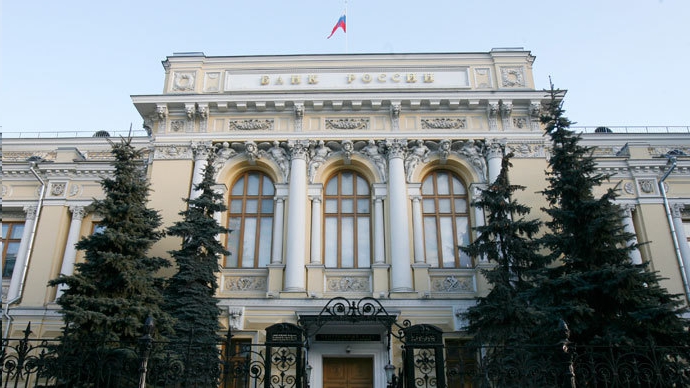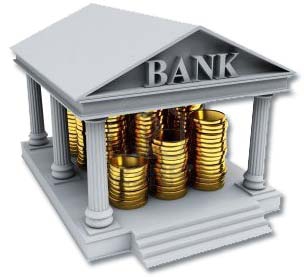Central banks are established in most modern capitalist economies. Their functions are extremely significant in terms of maintaining the stability of the state’s economic system, the turnover of the national currency, and solving the most important social problems. What is their specificity? What are the features of the Bank of Russia?

History of the emergence of central banks
Before exploring the essence of the Central Bank as a separate political and financial institution, as well as studying the main functions and tasks of the Central Bank of the Russian Federation, we will familiarize ourselves with the basic historical information about how the Central Banks appeared. First of all, we note that the name of the respective structures in different states may vary. For example, in Russia, the official name of the respective credit institution is the Bank of Russia. In the United States, the Federal Reserve performs a similar function. The National Bank operates in Belarus. But the key functions that the relevant financial institutions perform are basically the same. Unofficially, most of these organizations are called Central Banks, or the Central Bank, and are considered as financial market players who solve the same problems.

Regarding key historical facts, it can be noted that the first Central Banks appeared at the end of the 17th century. Bank of Sweden, or Riksbank, many researchers consider the first "central". It was founded in 1668. The first Central Bank can also be attributed to the Bank of England, which was vested with the right to issue banknotes, as well as accounting bills. This institution was founded in 1694. Subsequently, the Central Bank as a financial institution began to spread in other states. Gradually, the functions of the Central Bank, which opened in different countries of the world, began to be supplemented by treasury activities, performing an intermediary role between the government and commercial banks, and solving problems related to the implementation of the national credit and financial policy.
Factors determining the role of the Central Bank in the state economy
Despite the similarity of the tasks being solved, the Central Banks in different countries differ in the degree of independence from the state, primarily political. For example, the US Federal Reserve is seen as an example of one of the most sovereign financial institutions. In turn, the German Federal Bank is among those credit institutions that are largely affiliated with the state. However, regardless of the actual sovereignty of the Central Bank, the key functions of the Central Bank in most countries are generally similar. Among those:
- issue of national currency;
- ensuring the functioning of commercial financial institutions;
- participation in the implementation of government economic programs;
- macroeconomic regulation;
- control over the observance of the legality of the work of financial organizations working within the country;
- analytical work regarding the identification of key performance indicators of the state economy.

Of course, these areas of activity of the Central Bank can be supplemented by other functions, determined on the basis of the specifics of the development of the economic system of a particular country.
Features of the Bank of Russia
We will now study the key features of the work and functions of the Central Bank of the Russian Federation. The Bank of Russia operates on the basis of the provisions of Federal Law No. 86, adopted on July 10, 2002. So, in accordance with this law, the property of the Central Bank of the Russian Federation belongs to the state on the basis of federal property. At the same time, the Bank of Russia has certain powers related to the disposal of its assets, including foreign exchange reserves.
The work of the Central Bank of the Russian Federation involves active interaction with state authorities. So, the Central Bank of the Russian Federation is obliged to submit annually to the State Duma key points related to state credit and financial policy. Prior to this, the corresponding project should be transferred to the President of the Russian Federation and the government. The Bank of Russia, like most of the Central Bank in other countries, is empowered to issue national currency, regulate the circulation of finances in the country, establish the exchange rate, and manage gold and foreign exchange reserves.
Monetary policy of the Central Bank
Many key tasks and functions of the Central Bank correlate with monetary policy of the state. This pattern is characteristic of both the Central Banks of developed countries as a whole and the Central Bank of the Russian Federation. The key areas of monetary policy that modern researchers highlight are as follows:
- maintaining price stability,
- money issue
- ensuring the competitive rate of the national currency,
- solving social problems - such as reducing unemployment.
Central banks, building strategies for the implementation of monetary policy, determine targets for each of the noted areas of work. For example, it can be the desired national currency rate, unemployment rate, inflation rate, etc. After that they regulate the banking system in order to ensure that its key indicators meet the desired values.

In developed countries, the main functions and operations of the Central Bank in terms of monetary policy are focused on achieving acceptable inflation indicators and employment of citizens. The priority of these tasks is largely related to the needs of society: the country's population will first of all welcome the opportunity to buy goods with minimal price increases, as well as get a job in the desired profession. The main difficulty accompanying the functioning of the Central Bank in this part is that in a capitalist economy, low unemployment, which is largely the result of the dynamic development of the economy, can be accompanied by high inflation.
Key Bank of Russia Functions
What are the main functions of the Central Bank of the Russian Federation? They form a fairly extensive list:
- interaction with the government of the Russian Federation with a view to developing a unified monetary and financial policy of the state;
- monopoly emission of the ruble, organization of monetary circulation of the national Russian currency;
- lending and refinancing of private banks;
- establishment of settlement rules in the Russian Federation, banking operations;
- serving budgets;
- management of gold reserves of the state;
- work on state registration and licensing of private banks;
- control over the activities of commercial financial institutions in terms of ensuring the legality of their functioning;
- monitoring the work of private banks;
- registration of issuing procedures carried out by credit institutions;
- currency regulation and related controls;
- formation of settlement rules for Russian financial residents with foreign structures;
- the establishment of standards governing accounting and reporting in the Russian Federation;
- formation of rules regarding the sale of foreign currency;
- control over inflationary processes.

The Central Bank is also engaged in analytical work in identifying key indicators of the effectiveness of the Russian economy.
The noted functions of the Central Bank of Russia correlate with the key objectives of the Russian Central Bank.
Among those:
- ensuring the stability of the national currency,
- development and strengthening of the credit and financial system of the Russian Federation,
- ensuring the effective operation of the state payment system.
The aforementioned goals set for the Russian Central Bank suggest their consistent achievement with the participation of various structural divisions of the main banking institution of Russia. Let's consider this aspect in more detail.
Central Bank Structure
So, the goals and functions of the Central Bank noted above suggest a correlation with the work of the structural units of the Russian Central Bank. All of them are arranged in a centralized system. Thus, the principle of vertical management is implemented in the Central Bank of the Russian Federation.
The structure of the Central Bank includes:
- central office;
- regional institutions;
- RCC;
- computer centers;
- storage facilities;
- additional institutions performing an auxiliary function regarding the work of key structures.
The specifics of the work of regional structures of the Central Bank
The vertical management system of the Central Bank of the Russian Federation includes, as we noted above, the regional structures of the main state bank. Consider the specifics of their activities in more detail.
It can be noted that the name of the territorial divisions of the Central Bank of the Russian Federation may vary depending on the status of the subject of the federation. For example, in the republics, the respective financial institutions may be referred to as National Banks. At the same time, they do not have legal independence and cannot issue legal acts, issue any guarantees and execute guarantees without the approval of the Board of Directors of the central office of the Central Bank, operating at the federal level. The tasks and functions of the regional structures of the Central Bank of the Russian Federation are defined in the Regulation, which is approved by the Board of Directors of the central office of the Central Bank. In turn, the Central Bank of Russia has the same status as the National Bank of the Republics of the Russian Federation in the cities of federal significance, territories, regions, as well as autonomous districts of Russia.
Top management of the Central Bank
Responsibility for how effectively the basic functions of the Central Bank should be carried out lies directly with the top management of the Central Bank. Consider the specifics of the functioning of the corresponding institution in more detail.
The key governing body of the Bank of Russia is the Board of Directors. It is a collegial structure responsible for the key functions of the Central Bank, the main activities of the bank, as well as managing the institution. The Board of Directors of the Central Bank includes the Chairman of the Central Bank, as well as 12 members of the Council of the Central Bank working on an ongoing basis. The Bank of Russia’s senior management structure under consideration forms the internal structure of the central office of the organization, approves the charters of various structural divisions of the Central Bank. The Board of Directors is responsible for regulating the activities of commercial financial institutions in Russia.
Central Bank Instruments
By what tools can the Central Bank of Russia fulfill its functions? Researchers distinguish their following list:
- approval of the key rate for basic operations;
- formation of reserve requirements;
- open market transactions;
- lending and refinancing of commercial financial institutions;
- currency regulation;
- issue of own assets.
In general, as we see, the noted list of instruments correlates with the key functions of the Central Bank. Management activities of the Central Bank of the Russian Federation are carried out through the publication of special regulatory acts - orders, instructions. The legislation of the Russian Federation may determine other instruments that allow to implement the basic functions of the Central Bank of the Russian Federation.

So, we examined the main features of the activities of the Central Banks as a financial institution in general, as well as the Bank of Russia in particular. The main functions of the Central Bank can be briefly presented in the following list:
- macroeconomic regulation in correlation with social objectives;
- ensuring the stability of the financial system of the state;
- issue of national currency and ensuring cash turnover in the country.
Their implementation involves the endowment of the Central Bank with the necessary powers in terms of interaction with other departments. But what should be their volume? Consider this issue in the context of the interaction of the Central Bank and other authorities.
The interaction of the Central Bank and government
The role and functions of the Central Bank fixed in the legislation in practice mean that the main banking institution of the state will have to interact with other government agencies, and in this sense, these communications may be accompanied by a number of contradictions. What can they be?
First of all, the interests of non-banking government agencies - for example, the Ministry of Finance, may involve a priority reduction in unemployment. In turn, the Central Bank may decide to put emphasis on reducing inflation. The position of both departments in this case is understandable. The Ministry of Finance as a government structure will be primarily interested in solving social problems, in this case, ensuring the employment of citizens. In turn, the functions of the Central Bank of the Russian Federation include ensuring macroeconomic stability, one of the criteria of which is low inflation.
Regarding the solution of this problem - when the priorities of the Central Bank and other authorities may diverge, two fairly polar points of view are observed among researchers. In accordance with the first, the goals and functions of the Central Bank of the Russian Federation should be prioritized by the activities of government structures, since competent macroeconomic regulation is a potentially more powerful tool from the point of view of effective management of the national economy than the solution of tasks predetermined by the needs of society, which may not always correlate with opportunities state. Each citizen, researchers believe, wants to get a big salary in a good position, but this desire should be real in terms of the objective laws of the economy. In the knowledge of which, as expected, the financiers of the Central Bank are more competent than government employees.

In accordance with another point of view, the tasks and functions of the Central Bank of the Russian Federation should be directly predetermined by the needs of society. It is quite possible, analysts believe, that citizens will be quite ready for high inflation - but the main thing is that there is work. As an example, supporters of this point of view cite some European countries in which price increases are low or even expressed in negative values, but unemployment is over the top tens of percent. In this sense, the Central Bank of those countries perfectly solve the problem associated with inflation targeting but the demands of society at the same time are completely unsatisfied - people cannot get a job, and their income is not enough even to purchase goods at stable prices.
Such a discussion often spills over into the question: “Is it worth legislatively allowing the Central Bank to act independently of the government and give the Central Bank, thereby giving priority to macroeconomic regulation?” Let's consider this aspect in more detail.
Does the Central Bank need independence?
So, should the Central Bank be independent of the government? There are two polar points of view in this regard.
The first assumes - yes, the Central Bank should be as independent as possible from other political institutions. This is predetermined by the laws of the capitalist economy, according to which the greater the freedom of action of a particular market entity, the more efficiently the economic system develops - in a particular industry or on the scale of the state as a whole.
The main counterargument of this position - the independence of the Central Bank is good exactly until the crisis in the economy. After this, the actions of the Central Bank, dictated by some analysis and calculations, in which a mistake can always creep in, can predetermine the occurrence of a large-scale socio-political crisis. In such scenarios, the Central Bank should, and at least take into account the position of government structures, and best of all, bring its activities in line with those priorities,that are formed at the level of non-banking political institutions.
What is the status of the Central Bank of the Russian Federation, how independent is it from state structures? On the one hand, there are formulations in the legislation of the Russian Federation according to which the main functions and tasks of the Central Bank of the Russian Federation imply activity subject to the sovereignty of the Central Bank over the Government. On the other hand, the Central Bank of the Russian Federation is accountable to authorities, in particular the State Duma. Thus, the Russian Central Bank legally has the ability to act independently, in practice - it is difficult to trace the actual use of the relevant powers.
The thesis of the Central Bank’s independence is widespread among the Russian expert community that the Central Bank of Russia is actually unwilling to allow the state’s foreign exchange reserves for infrastructure or solving social problems — instead, gold reserves continue to be held in foreign assets. In this sense, the activities of the Bank of Russia can be assessed as inconsistent with the priorities of the Government. There is a counterargument to this thesis - at the moment, gold reserves, based on macroeconomic realities, it is not quite advisable to use as an investment resource. Better let it be reserves in case of crises in the economy. As soon as the need for using gold reserves as an investment tool appears, and the Russian government confirms this, the Central Bank will release the corresponding reserves, the researchers believe.








